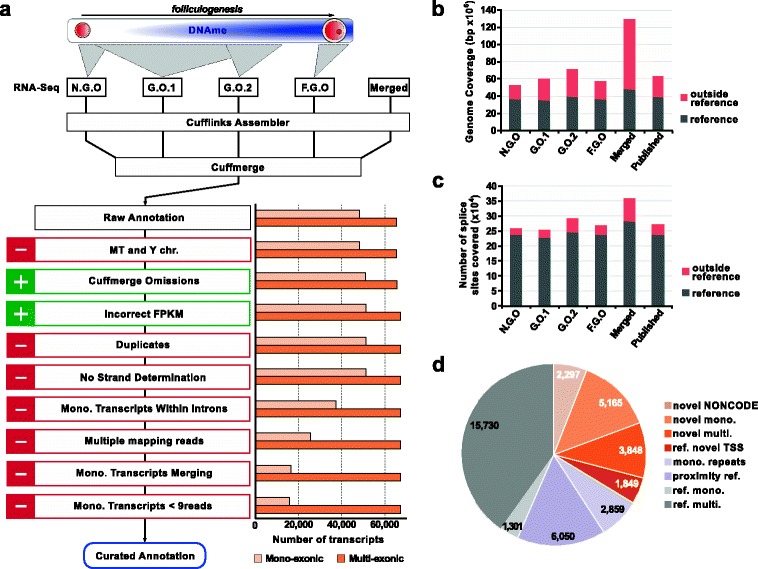Fig. 1.

Oocyte transcriptome assembly. a Overview of the strategy used for the oocyte transcriptome assembly, with the different oocyte stages sequenced in relation to DNAme establishment (top), the curations made to the raw Cufflinks annotation (bottom left) and the corresponding changes in transcript numbers (bottom right). b Fraction of the genome covered by at least five non-redundant reads in our datasets, our merged datasets (Merged) and the merged published oocyte RNA-Seq datasets (Published; Table S2 in Additional file 2). c Number of reference splice sites covered by at least five non-redundant reads in our datasets, our merged datasets (Merged) and the merged published oocyte RNA-Seq datasets (Published). d Composition of the oocyte transcriptome: novel NONCODE corresponding to non-reference transcripts present in the NONCODEv4 database (±5 kbp); ref. novel TSS corresponding to reference transcripts for which an upstream TSS active in oocytes has been identified; mono. repeats corresponding to mono-exonic transcripts matching expressed TEs; proximity ref. corresponding to transcripts within 1 kbp or 5 kbp of reference genes for multi-exonic and mono-exonic transcripts, respectively. FPKM fragments per kilobase of transcript per million mapped reads
